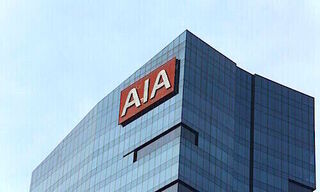The Hong Kong banking regulator’s discussion paper on crypto-assets shows a far stricter supervisory regime in the making.
The Hong Kong Monetary Authority (HKMA) released a discussion paper late last week. It clearly indicates a singular purpose.
Anything deemed a crypto-asset will be subject to firm local regulatory supervision as early as next year - and no later than 2024.
Although anyone can comment on the paper by email until the end of March, most basic characteristics of the future regulation look like they are already in place.
Impact on Banking Stability
The HKMA’s initial thrust is squarely aimed at stablecoins linked to securities or sovereign (fiat) currencies.
Given they are gaining the most traction, the HKMA says it is of «paramount importance» that such stablecoins not affect public confidence in the «safety, efficiency, and soundness» of the payments system - and their impact on banking stability.
«Among other things, there have been talks about having stablecoins as a substitute for bank deposits. Significant shift(s) from bank deposits to funds held in relation to stablecoins could be an issue of concern to (for) banking stability,» the discussion paper indicated.
It also noted their potential impact on the Hong Kong dollar as a backing currency, saying the level at which they were issued or redeemed could affect interbank demand and supply.
Little Left for Comment
Given this, the HKMA has decided that a good kitchen sinking is the best treatment. Full licencing will be required of anyone - or any entity - that issues, creates or destroys stablecoins, manages reserves, validates transactions, stores private keys, and maintains records.
That also holds true if they facilitate redemptions and can send or receive funds. In short, anything and anybody executing and settling transactions.
Given this almost blanket proviso, it is hard to see what anyone is expected to comment on. But it should be an entertaining experience if a wayward comment makes its way to the public, say from a crypto-currency exchange or two, particularly if they try to squirm-argue their way out of any of the above requirements.
Strict Authorization Regime
The HKMA also stated that it intends to enshrine stablecoin authorization requirements in law, with all licensed institutions having to comply with them on an ongoing basis.
That hints at an entirely new line of thematic on-site inspections - and a great potential source of revenue for auditors to get in on for externally mandated ones.
To get licensed, the entity will need adequate financial resources, they will have to adhere to capital adequacy requirements, and evidence ample stablecoin reserves or backing assets.
Bank-like Processes
They also have to build clear operational processes, provide financial reporting and disclosure, and have sound risk management, effective cyber-security, business continuity and AML frameworks.
And last and probably least, they need to follow fit and proper rules for management and ownership.
Simply put, they should be a bank.
Speculative and Volatile
Now for the part many have been waiting for. Where do Bitcoin, Binance and Ethereum fit in all this? It is not entirely clear.
But the HKMA does make its views clear about crypto-assets not linked other assets:
«These kinds of crypto-assets are highly speculative and volatile and many do not have any intrinsic value,» the HKMA writes.
For PIs Only
Such assets are, according to them, vulnerable to hacking, money laundering, fraud, and market manipulation.
The paper indicates the HKMA is likely to deem them complex products subject them to selling restrictions.
As part of that, it also references the Securities and Futures Commission (SFC) November 2018 circular on virtual assets and virtual asset exchanges and says such products should only be aimed at professional investors (PIs).
Suitability Rears its Head
For the HKMA, that means that its full suite of suitability requirements will come to bear on crypto-assets.
In other words, it will require a cumbersome process for banks to fumble around endlessly with, likely burning out a generation or two of project managers.
Professional clients will have to prove their knowledge and be assessed, either on-line or on paper, related to the crypto-asset class they intend to invest in.
Solicited or Unsolicited
The institution selling them will then have to make sure it manages concentration risk, making sure that any one client does not have too much of them in their portfolio.
Comprehensive records of the fund, the manager, and counterparts will have to kept and they will have to provide enough information and warnings to clients about crypto-assets.
That likely means additional business risk headcount to slowly manhandle tiresome call logs and monthly internal spreadsheets determining whether the client solicited his or her crypto-asset or not.
A Spray of Term Sheets
Clients should also get ready for another wave of constant, indeterminate emails drowning their inboxes, particularly from heavily audited wealth managers receiving poor scorecards from the banking regulator.
As, from the looks of it, future licensed institutions will have to draft something that for all intents and purposes looks like a term sheet for crypto-assets.
It should be a fun exercise, particularly the sections on bitcoin mining, proof of work and block rewards.


























